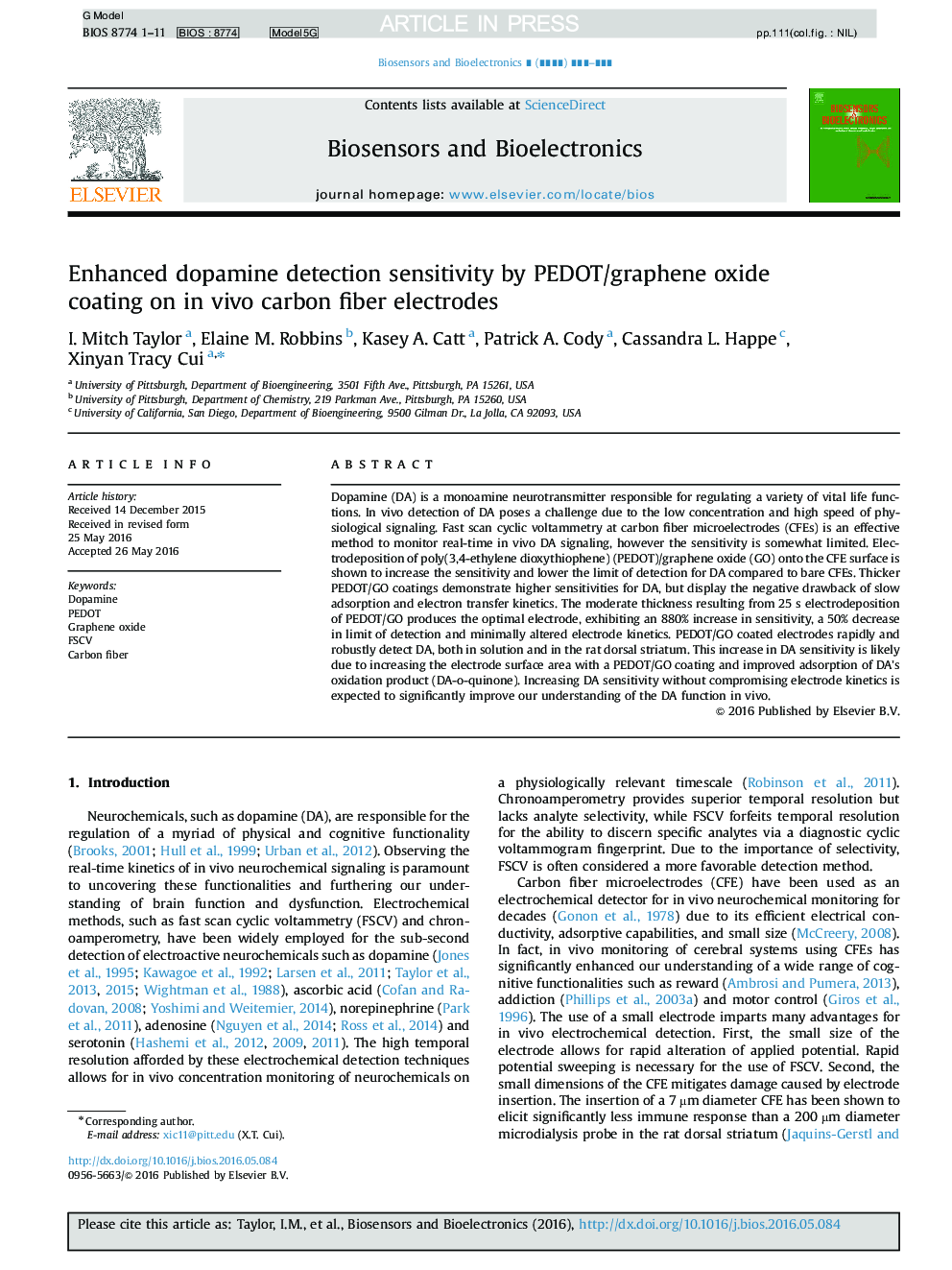| Article ID | Journal | Published Year | Pages | File Type |
|---|---|---|---|---|
| 5031700 | Biosensors and Bioelectronics | 2017 | 11 Pages |
Abstract
Dopamine (DA) is a monoamine neurotransmitter responsible for regulating a variety of vital life functions. In vivo detection of DA poses a challenge due to the low concentration and high speed of physiological signaling. Fast scan cyclic voltammetry at carbon fiber microelectrodes (CFEs) is an effective method to monitor real-time in vivo DA signaling, however the sensitivity is somewhat limited. Electrodeposition of poly(3,4-ethylene dioxythiophene) (PEDOT)/graphene oxide (GO) onto the CFE surface is shown to increase the sensitivity and lower the limit of detection for DA compared to bare CFEs. Thicker PEDOT/GO coatings demonstrate higher sensitivities for DA, but display the negative drawback of slow adsorption and electron transfer kinetics. The moderate thickness resulting from 25 s electrodeposition of PEDOT/GO produces the optimal electrode, exhibiting an 880% increase in sensitivity, a 50% decrease in limit of detection and minimally altered electrode kinetics. PEDOT/GO coated electrodes rapidly and robustly detect DA, both in solution and in the rat dorsal striatum. This increase in DA sensitivity is likely due to increasing the electrode surface area with a PEDOT/GO coating and improved adsorption of DA's oxidation product (DA-o-quinone). Increasing DA sensitivity without compromising electrode kinetics is expected to significantly improve our understanding of the DA function in vivo.
Related Topics
Physical Sciences and Engineering
Chemistry
Analytical Chemistry
Authors
I. Mitch Taylor, Elaine M. Robbins, Kasey A. Catt, Patrick A. Cody, Cassandra L. Happe, Xinyan Tracy Cui,
